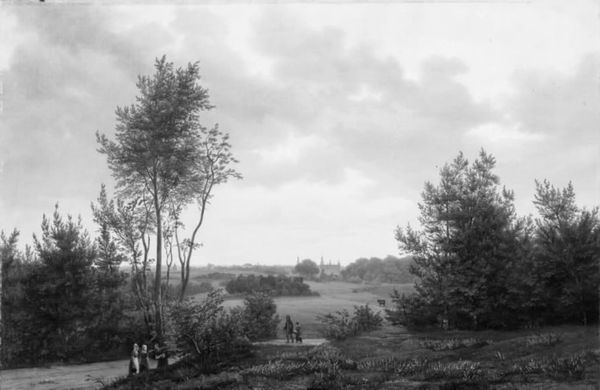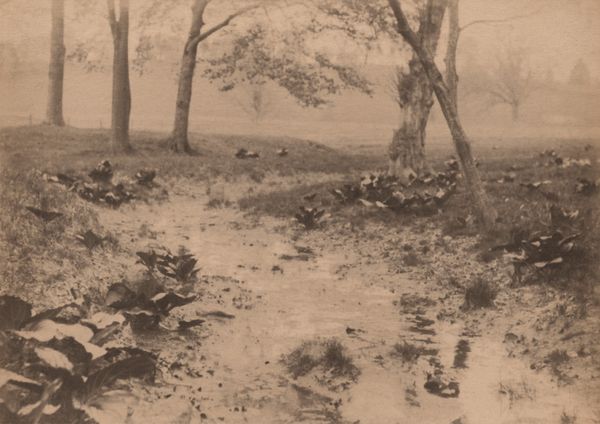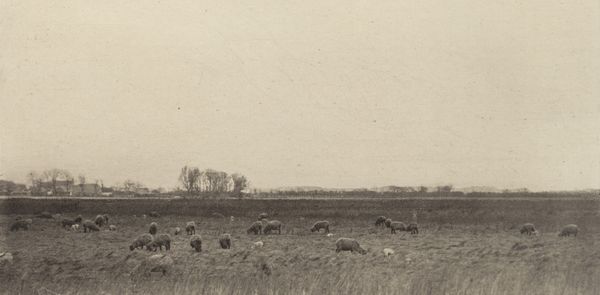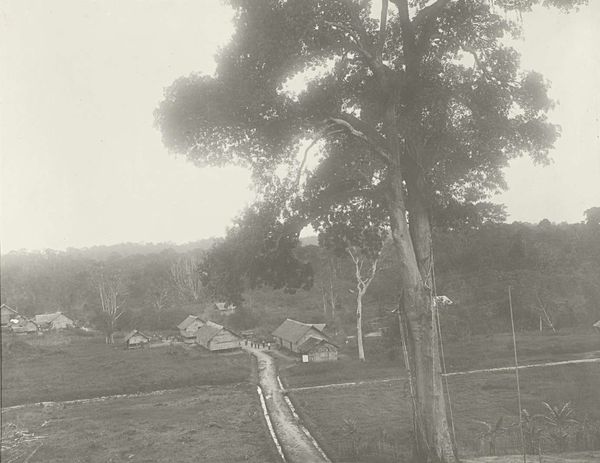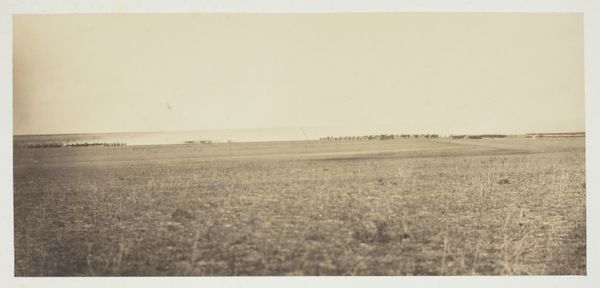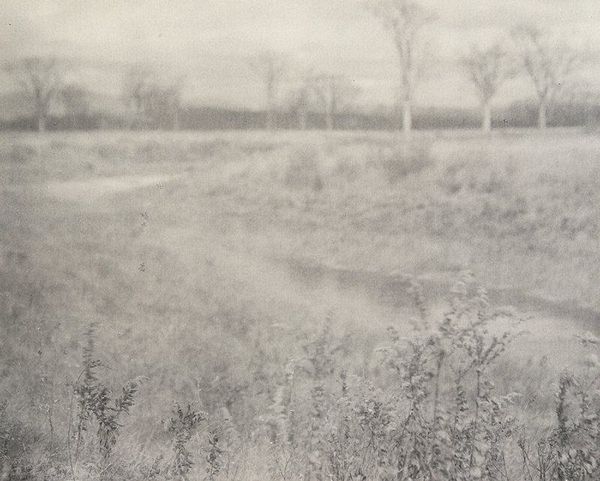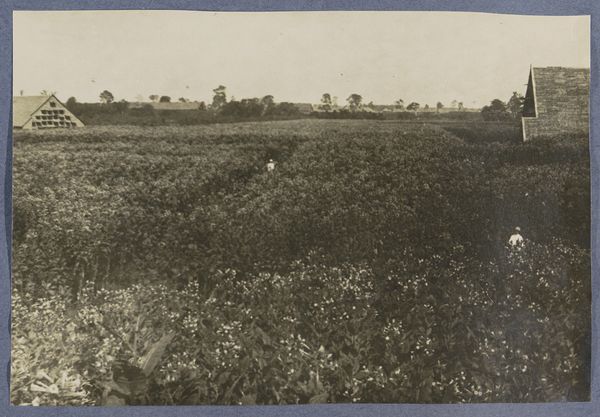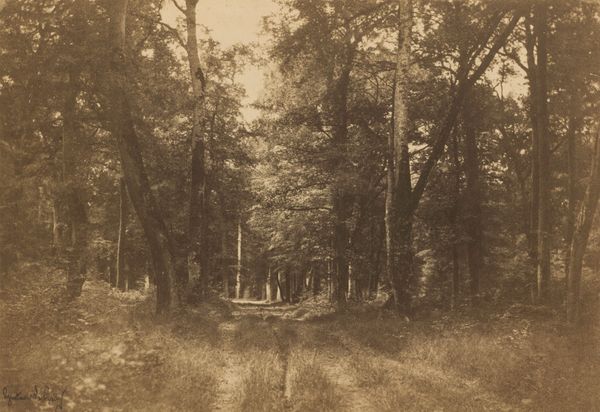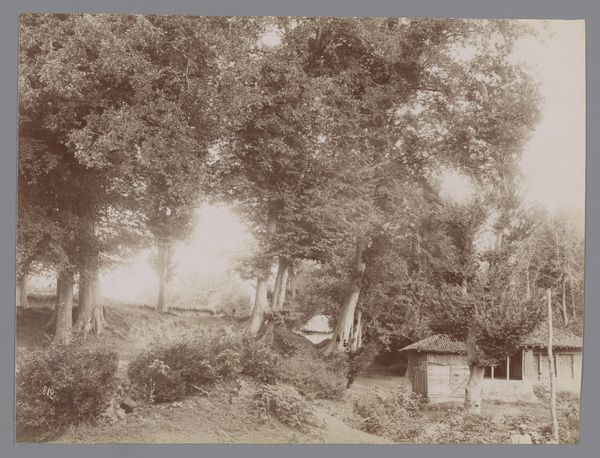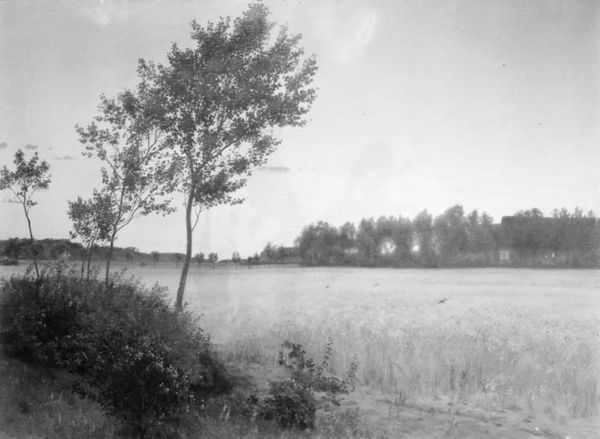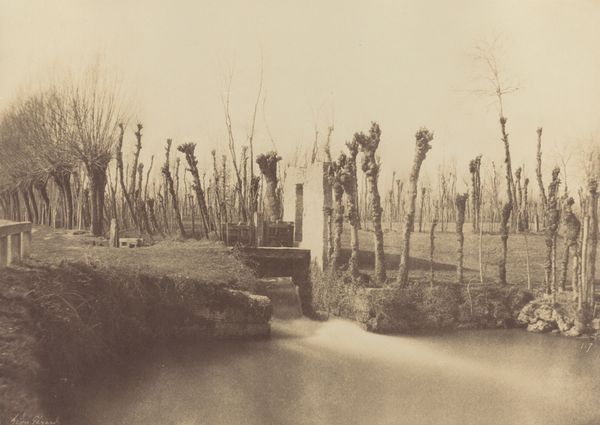
Dimensions: sheet (trimmed to image): 12.6 × 21.9 cm (4 15/16 × 8 5/8 in.) page size: 27 × 34.8 cm (10 5/8 × 13 11/16 in.)
Copyright: National Gallery of Art: CC0 1.0
Curator: Ah, here we have Alfred Stieglitz’s “In the Suburbs of Paris,” a photograph likely taken between 1894 and 1896. What are your immediate impressions? Editor: A muted, earthy melancholy. The sepia tones cast a veil of nostalgia, but the solitary figure hunched over the soil speaks of unrelenting labor. Curator: Precisely. The composition itself is masterful. Note how the horizon line is bisected by a dense row of trees, providing a clear demarcation of space. Then observe the use of aerial perspective. Editor: The slightly blurred background lends a sense of depth, which only emphasizes the figure in the foreground. Considering the possible timeframe, I am curious about the social dynamics embedded here. Was Stieglitz aiming to romanticize the labor, or perhaps subtly critique the societal structure that demanded it? Curator: The Pictorialist style favored by Stieglitz often aimed for artistic effect rather than stark realism, and the use of soft focus and manipulated printing techniques allowed photographers to create images that resembled paintings or drawings. Note the composition—the placement of the figure and the rhythm of the trees across the horizon. There's a definite formalism here, even in this seemingly candid scene. Editor: Yes, while that aesthetic certainly elevates the image beyond documentary photography, it’s still vital to consider the lives represented. We can't divorce aesthetics from ethics; they are intrinsically linked, aren't they? Who owned the land? What were the economic conditions for the laborer? How might gender play into these factors? Curator: Valid points, certainly. But returning to the intrinsic elements of the image, the tonal range, from the pale sky to the rich earth tones, adds significant depth. And I think we agree on the figure—this point of interest helps draw our eyes across the plane, and encourages the linear design here. Editor: Perhaps it invites empathy. It’s tempting to romanticize a pre-industrial era through this photographic lens. Stieglitz certainly captured a moment pregnant with quiet dignity, but remembering the daily hardships of such work can help add an important layer to our encounter with this landscape. Curator: I concede that it invites an important discussion that, on its own, form is often mute. Together, hopefully, viewers will take note.
Comments
No comments
Be the first to comment and join the conversation on the ultimate creative platform.


